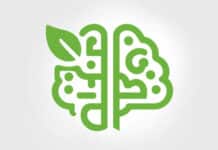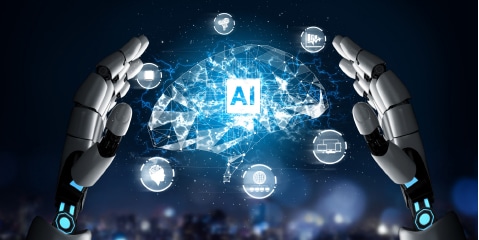AI is already impacting our lives in various ways, and promises to be ubiquitous in the near future. But the challenges will need to be addressed, especially to ensure it helps make decisions that are ethical and free of any bias.
According to a recent report by Gartner, by 2025, artificial intelligence (AI) will be a top five investment priority for more than 30% of CIOs globally. Some of the key trends that will shape the AI landscape in the next five years include:
- AI engineering: A discipline that applies engineering best practices to AI development, deployment, and operation.
- AI democratisation: The spread of AI tools and skills to a wider range of users, domains, and applications.
- AI ethics: The study and practice of ensuring that AI systems are fair, accountable, transparent, and human-centric.
- AI augmentation: The enhancement of human capabilities and performance by AI systems.
- AI everywhere: The integration of AI into everyday devices, environments, and experiences.
Challenges in AI technology
Though there is a technology elevation in AI to machine learning, deep learning and generative AI, the rise of AI platforms and ecosystems also poses some risks and challenges, such as:
- The concentration of power and data in a few large AI platform providers, such as Google, Amazon, Microsoft, or Alibaba, which may stifle competition and innovation, and create dependencies and lock-ins for users and developers.
- The lack of standards and governance for AI platforms and ecosystems, which may lead to inconsistencies, conflicts, and vulnerabilities in the quality, performance, and security of AI systems and services.
- The complexity and heterogeneity of AI platforms and ecosystems, which may increase the technical and organisational challenges of developing, deploying, and managing AI systems and services, and require new skills and competencies.
To address these challenges, some of the best practices and recommendations for AI platforms and ecosystems include:
- Adopting an open and collaborative approach to AI platform development and use, which encourages diversity, inclusion, and participation of different stakeholders and perspectives, and fosters innovation and learning.
- Establishing common frameworks and standards for AI platform governance and interoperability, which ensure the alignment, compatibility, and compliance of AI systems and services with the principles, values, and norms of society and users.
- Developing and implementing effective strategies and policies for AI platform management and optimisation, which balance the trade-offs and benefits of centralisation and decentralisation, customisation and generalisation, and integration and differentiation.
The convergence of AI and other technologies
An important trend that will shape the AI landscape in the next five years is the convergence and integration of AI and other technologies, such as cloud computing, 5G, Internet of Things (IoT), blockchain, quantum computing, and biotechnology, which will create new possibilities and opportunities for AI innovation and application. This convergence will be driven by several factors, such as:
- The complementarity and synergy of AI and other technologies, which can enhance and extend the capabilities, functionalities, and performance of each other, and create new value and solutions that are not possible or feasible by each technology alone.
- The availability and accessibility of AI and other technologies, which can increase and diversify the sources, types, and volumes of data and information that feed and fuel AI systems, and enable the deployment and delivery of AI systems and services to more devices, platforms, and environments.
- The advancement and diffusion of AI and other technologies, which can accelerate and amplify the development and adoption of AI systems and services, and enable the creation and discovery of new knowledge and insights that can inform and inspire AI innovation and research.
Artificial intelligence (AI) is rapidly transforming our world, and its impact on the job market is a topic of intense discussion. While some fear widespread job displacement, others see AI as a creator of new opportunities.
AI’s potential for job displacement
AI excels at automating repetitive, rule-based tasks. Jobs in manufacturing, data entry, transportation (think self-driving trucks), and customer service are susceptible to automation as AI systems become more sophisticated. Algorithmic decision-making is also on the rise, impacting roles in finance, law, and healthcare.
Technical advancements provide specific examples. AI-powered robots can now perform complex assembly line tasks with higher precision and efficiency than human workers. Additionally, machine learning algorithms can analyse legal documents, identify patterns, and even draft basic legal contracts, potentially impacting paralegals and legal assistants.
AI as a catalyst for job creation
However, AI is not a job destroyer. New job roles are emerging in the field of AI itself, requiring expertise in areas like:
- Machine learning engineers: These professionals design, develop, and maintain AI models, requiring a strong foundation in computer science, statistics, and mathematics.
- Data scientists: They collect, clean, and analyse vast data sets used to train AI models. Skills in data wrangling, statistical analysis, and programming languages like Python and R are essential.
- AI ethicists: As AI becomes more complex, ethical considerations arise. AI ethicists ensure responsible development and deployment of AI systems, mitigating potential biases and ensuring fairness.
Furthermore, AI can augment human capabilities in various fields. For example, AI-powered diagnostic tools can assist doctors in medical diagnosis, leading to more accurate and efficient healthcare delivery. Similarly, AI-powered design tools can empower graphic designers to explore creative possibilities more efficiently.
The evolving skills landscape
The rise of AI necessitates a shift in the skills demanded by the workforce. Technical skills like data analysis, programming, and cloud computing will become increasingly valuable, while ‘soft skills’ like critical thinking, problem-solving, creativity, and communication will remain essential.
The ability to collaborate with AI systems and translate insights into actionable solutions will be crucial. Adaptability and lifelong learning will become essential traits, as individuals navigate the changing job market and embrace new technologies.
Building AI policies
The increasing adoption of AI necessitates well-defined policies to ensure its responsible and ethical development and use. Here’s a deep dive into some crucial considerations for building strong AI policies.
Establishing a responsible AI governance framework
- Form a working group: Create a diverse team comprising board members, executives, legal counsel, AI developers, ethicists, and potentially even external stakeholders. This group will champion AI policy development and implementation.
- Educate stakeholders: Ensure all board members and senior leadership have a fundamental understanding of AI and its ethical implications. This fosters informed decision-making regarding AI use cases and potential risks.
- Define policy objectives: Clearly articulate the goals of your AI policy. Is it to ensure fairness and transparency? Mitigate bias? Align AI development with organisational values? Having clear objectives guides policy development.
Assessing the legal and regulatory landscape
- Identify relevant regulations: Research and understand existing regulations concerning data privacy, security, and algorithmic fairness that might apply to your organisation’s use of AI.
- Compliance strategy: Develop a clear plan for adhering to relevant regulations. This might involve data governance practices, impact assessments for high-risk AI systems, and documentation of AI decision-making processes.
- Stay updated: The legal and regulatory landscape surrounding AI is constantly evolving. Continuously monitor for updates and adapt your policies accordingly.
Identifying AI use cases and potential risks
- Mapping AI applications: Identify all current and potential future uses of AI within your organisation. This could include AI-powered customer service chatbots, automated recruitment tools, or AI-driven product recommendations.
- Risk assessment: For each AI application, conduct a risk assessment to identify potential negative consequences. Consider bias, fairness, privacy, security, and potential job displacement.
- Mitigation strategies: Develop strategies to mitigate identified risks. This could involve implementing bias detection and mitigation techniques, obtaining informed consent for data collection, or establishing clear human oversight mechanisms for critical AI decisions.
Ensuring transparency and explainability
- Explainable AI (XAI) techniques: Whenever possible, leverage XAI techniques to understand how AI systems arrive at decisions. This fosters trust and helps identify potential biases.
- Clear communication: Communicate the use of AI to relevant stakeholders, including employees, customers, and the public. Be transparent about the purpose and limitations of AI systems.
- Right to explanation: Consider incorporating a ‘right to explanation’ principle into your policy. This could allow individuals to request an explanation for AI-driven decisions that impact them.
Accountability and human oversight
- Define roles and responsibilities: Clearly define who is accountable for the development, deployment, and monitoring of AI systems within the organisation.
- Human-in-the-loop processes: For critical AI applications, establish human oversight mechanisms. This could involve human review of AI decisions or the ability to override AI recommendations when necessary.
- Incident response plan: Develop a plan for addressing potential issues arising from AI use. This could include procedures for handling biased outputs, data breaches, or unintended consequences.
Continuous monitoring and improvement
- Regular audits: Periodically audit your AI systems for fairness, bias, and compliance with your policy guidelines.
- Feedback mechanisms: Establish channels for employees, customers, and other stakeholders to report concerns or issues related to AI use.
- Policy evolution: Recognise that AI policies are not static documents. Continuously review and update your policies as AI technology evolves and societal expectations change.
By addressing these key considerations, organisations can build robust AI policies that promote responsible AI development and deployment, fostering trust, transparency, and a future where AI benefits all.
Envisioning the AI-empowered future
Artificial intelligence (AI) is rapidly transforming our world, and its impact is only set to accelerate in the years to come.
AI in everyday life: Imagine a world where your morning commute is optimised by AI-powered traffic management systems, dynamically adjusting routes to avoid congestion. Smart homes personalised by AI anticipate your needs, adjusting lighting, temperature, and even suggesting activities based on your preferences and schedule. Personalised healthcare becomes a reality with AI-powered diagnostics analysing medical data to identify potential health risks and recommend early interventions.
Revolutionising industries: AI will significantly impact various industries. Manufacturing will see widespread adoption of intelligent robots capable of complex tasks with increased efficiency and precision. AI-powered design tools will empower architects and engineers, fostering innovative and sustainable infrastructure development. Agriculture will benefit from AI-driven precision farming techniques optimising resource use and crop yields. The legal and financial sectors will leverage AI for contract review, fraud detection, and personalised financial planning.
The rise of collaborative intelligence: The future of work will likely involve humans and AI collaborating seamlessly. AI will handle repetitive tasks, freeing up human time for creative problem-solving, strategic thinking, and social interaction. New jobs will emerge in areas like AI development, data science, and human-machine collaboration.
The power of explainable AI: Transparency and explainability will be crucial in building trust in AI. Advances in explainable AI (XAI) techniques will allow us to understand how AI systems arrive at decisions, mitigating the risk of bias and ensuring fairness.
The challenge of ethical AI: As AI capabilities expand, ethical considerations will become increasingly complex. Bias mitigation techniques will be essential to ensure AI systems make fair and unbiased decisions. Robust governance frameworks will be needed to guide the development and deployment of AI in accordance with human values and ethical principles. Questions surrounding job displacement due to automation will require proactive solutions like reskilling and upskilling initiatives to prepare the workforce for the changing job market.
The future of learning: Education will transform with the rise of AI-powered personalised learning platforms. These platforms can tailor learning experiences to individual student needs, adjusting pace and difficulty based on performance. AI tutors can provide additional support and answer student questions in real-time. This personalised approach has the potential to improve learning outcomes and make education more accessible.












































































